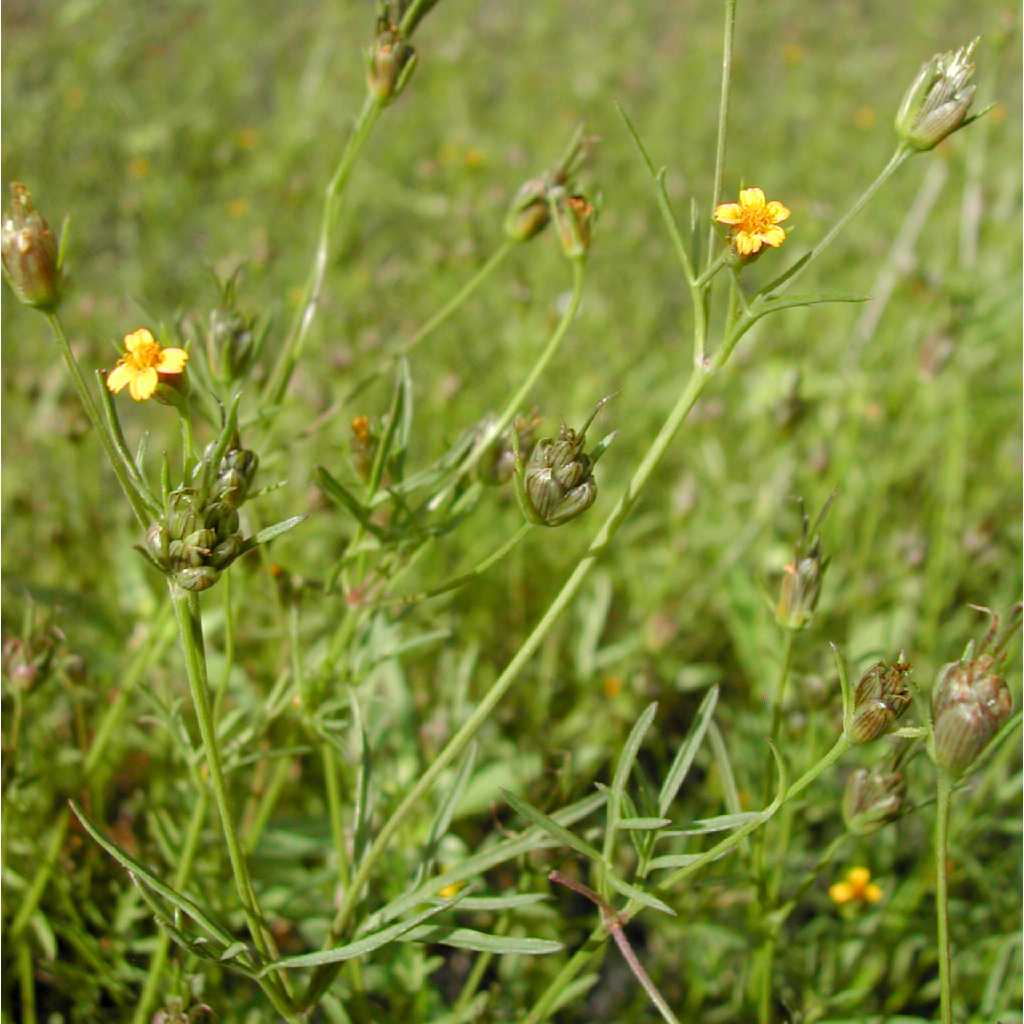
|
Family: Asteraceae |
Annuals, 10-40(-70+) cm (taprooted). Stems 1 (bases relatively thick), ascending to erect, branched distally or ± throughout (striate). Leaves mostly cauline; opposite; obscurely petiolate or sessile; blades mostly pinnately lobed [undivided] (lobes 3-5, usually linear to filiform, sometimes lanceolate), ultimate margins usually entire, sometimes denticulate (often ciliate, at least proximally, apices acute), faces glabrous [hairy]. Heads radiate, borne singly or in loose, cymiform arrays. Calyculi of (1-)3-5+ erect, narrowly spatulate or linear to filiform, herbaceous bractlets (often surpassing phyllaries, margins usually hispid-ciliate). Involucres cylindric to obconic, 2-5 mm diam. (larger in fruit). Phyllaries 3-5+ in ± 2 series, distinct, erect, mostly oblong or ovate, equal, membranous. Receptacles concave to flat, paleate; paleae similar to phyllaries, oblong or oval to lanceolate or linear (± embracing cypselae, ± hyaline with brown striae, apices obtuse, apiculate). Ray florets 1-3[-8], pistillate, fertile; corollas pale yellow [orange]. Disc florets 3-10[-20+], bisexual, fertile; corollas ± yellow (at least distally), tubes shorter than funnelform throats, lobes 5, deltate. Cypselae (± dimorphic) outer obcompressed, ellipsoid or obovoid, winged (wings ± corky, often cucullate and/or pectinate), faces often corky-tuberculate, glabrous, inner ± obovoid, usually some (innermost) tapered to ± barbellate beaks; pappi 0, or persistent or tardily falling, of (1-)2-3 spreading to reflexed, retrorsely barbellate awns. x = 25. |
This project was made possible in part by the Institute of Museum and Library Services [MG-70-19-0057-19].
Powered by Symbiota



